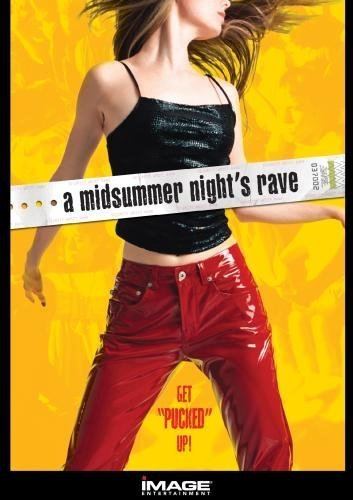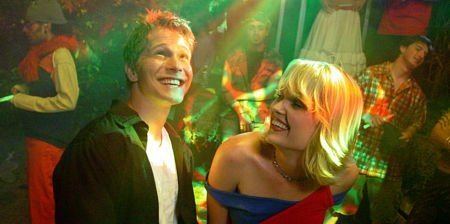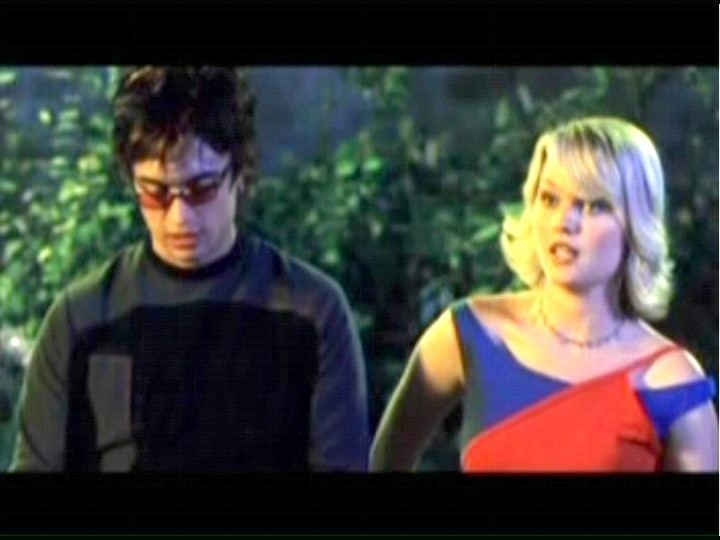A Midsummer Nights Rave
5.2 /10 1 Votes
Director Gil Cates Jr. Initial DVD release September 14, 2004 Duration Language English | 5/10 IMDb Genre Drama Budget 1.5 million USD Writer Robert Raymond | |||||||||||||||||||||||||||||||||
 | ||||||||||||||||||||||||||||||||||
Release date 2002 Cast (Xander), (Elena), Corey Pearson (Damon), (Mia), (Evan), (Britt)Similar movies Factory Girl , Straight Outta Compton , Valley Girl , Permanent Midnight , Lucy , The Great Beauty Tagline Get pucked up! | ||||||||||||||||||||||||||||||||||
A midsummer night s rave ev ferry corsten punk
A Midsummer Night's Rave is a film adapted from Shakespeare's A Midsummer Night's Dream released in 2002. The film stars Corey Pearson, Lauren German, Andrew Keegan, Chad Lindberg, and Sunny Mabrey; and was directed by Gil Cates Jr.. It is set at a rave rather than a forest, as in the original. The film received little attention from professional movie critics, but is considered a success with teen audiences, and has been used as an exemplar for a category of movies (the "McShakespeare", an example of McDonaldization) in more academic publications.
Contents
- A midsummer night s rave ev ferry corsten punk
- A midsummer night s rave opening titles
- Plot and setting
- Reception
- A Midsummer Nights Rave and the McShakespeare
- References

A midsummer night s rave opening titles
Plot and setting

A Midsummer Night's Rave transposes A Midsummer Night's Dream to modern rave culture. Unlike Rave Macbeth—released a year earlier and also adapting a Shakespeare play, Macbeth, into the context of rave culture—A Midsummer Night's Rave's plot also explores the characters' activities outside of the rave: Xander (Lysander) and Mia (Hermia) needs the aid of a rave and a green glowing drug, provided by a British mystic, O. B. John (Oberon), to admit their love for each other; a drug dealer, apparently modelled on Shylock, named Doc wants his stolen drug money; and Nick (Nick Bottom) dons a donkey costume at a daycare center. The plot is significantly altered from the original to "accommodate a homosexual relationship and to allow one liberated woman, Elena, to reject her callow lover."
Reception

The movie received a 70% "Audience Score" on review aggregator site Rotten Tomatoes, but has not received enough reviews from professional movie critics to be assigned an overall "Freshness" score. Among the few professional reviews is Joe Leydon's for Variety in 2003. The review is generally negative, but highlights some actor performances and the directorial choice to omit the original Shakespearean dialog. Overall he thinks it "... plays less like witty romantic comedy than a watered-down (and dumbed-down) version of ...Go. [The director] goes for cheap laughs by encouraging actors to chew on the scenery—and each other—without worrying about such niceties as narrative logic and character consistency." His summary of its viability as a film is that "[it] isn't likely to be a fave-rave with critics or auds." Mark Jenkins, in a review for the Washington City Paper, sums it up as: "Although rendered in suitably neon hues, the movie is not a visual triumph; its low-budget seams show, and an attempt at a Trainspotting-like aside is weak. The film's principal virtues are its attractive cast, sprightly pace, thumping soundtrack, and happy-face take on young romance. The love drug is not required for viewing, but any cynics in the audience will probably wish they had taken something."

A more positive take appears in the book Visual Media for Teens (2009), which in its chapter on "'Issues of Identity' Films" recommends A Midsummer Night's Rave with the description "This film really manages to stick close to the original story in a delightful retelling of a classic play that appeals to teens." R. S. White, however, in Shakespeare's Cinema of Love: A Study in Genre and Influence (2016), describes it by saying that "... [the] farcical A Midsummer Night's Rave (2002), [is] a conscious pastiche of Shakespeare's play, [and] shows the irrational events being caused by consciousness-altering drugs and the air of psychedelic fantasy created by a musical rave party." Similarly, Joss Whedon as Shakespearean Moralist: Narrative Ethics of the Bard and the Buffyverse (2014) lists it among the films it considers "a hit with the teens" in a chapter exploring films that employ allusions to and loose adaptations of Shakespeare, as distinct from the more strict adaptations of Orson Welles, Laurence Olivier, and Franco Zeffirelli. In an article for Tor.com, Leah Schnelbach and Natalie Zutter lists it as among "Shakespeare Adaptations That Best Speak to Teens", and concludes: "If any of you want to revisit a certain best night of your life subset of 1990s culture, this is your Shakespeare adaptation." In 2016, Kristen Stegemoeller, writing for Paper, listed it as number 8 in a list of "Shakespeare's Teen Movies" based solely on a plot description found on Wikipedia. And in a 2015 article "In Defense of Go As A Rave Movie" (referring to Go (1999)), Genna Rivieccio describes A Midsummer Night's Rave as among the "classics" of rave movies.
A Midsummer Night's Rave and the "McShakespeare"

In 2006, Carolyn Jess-Cooke described A Midsummer Night's Rave and Rave Macbeth as exemplars of the "McShakespeare", a term she creates and situates relative to Harvey Greenberg's "trope of unmitigated narrative damnation": the "McMovie".
A "McMovie"—the application of McDonaldization to movies—is, according to Greenberg, characterised by "[dogged] imitation and allusion rather than experimentation, even within narrow genre confines[.] ... Uninspiring prototypes [that] have spun off sequels, which have birthed still drearier successors—a Barthesian chain of replication unfolding into ever-declining signification." Jess-Cooke adds that "[the] McMovie fundamentally draws attention to the ideological assertions and determining factors of a fast-food chain of film production. ... film rip-offs that champion loose endings, weak, cartoonish characters, inconsistent screenplays, stale narratives, fast pacing, loud music and soundbite dialogue ...".
Analogous to this, Jess-Cooke creates the concept of the McShakespeare as a commodification of Shakespeare adaptations.
In the McShakespeare, the Bard is used—like the golden arches [of the McDonald's logo]—to localise cultural concerns within a global economy and, conversely, to signify the global within the local. The tension between the local and global is at the heart of the McShakespeare, largely in terms of the use of the plays to articulate experiences of displacement and to re-work social rituals, indigenous identities, traditions, languages and cultural codes for popular consumption. ... [The] McShakespeare suggests contemporary Shakespeare appropriation as a signifying practice instead of a point of textual origin[:] ... Shakespeare serves less as an originating text or a cultural icon than as product placement, a secondary position of intertextual engagement that classifies, or legitimates, the often blatant registers of a McDonald's ideology.
In that context she assesses A Midsummer Night's Rave. She finds that it "[acknowledges] Shakespearean cinema's main audience as teenage" by adapting Shakespeare's play as explicitly "youth culture". As an example she points out that its entire cast is composed of actors that have played in popular teen movies like The Fast and the Furious, American Pie, and 10 Things I Hate About You; and includes a part for pop-culture icon Carrie Fisher that "subtly conjures" Princess Leia. She describes its plot as "loose" and "weaves together strands from a variety of Shakespeare's plays", and that it is neither narrative-driven nor ideologically subversive. However, she does find in it an effort to recontextualise Shakespeare away from a "high school" and academic setting, and into a more "in culture" and "anti-authoritarian" one.
References
A Midsummer Night's Rave WikipediaA Midsummer Nights Rave IMDb A Midsummer Nights Rave themoviedb.org
